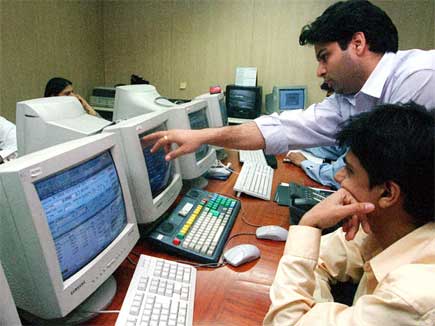Now you know why there is no euphoria about the Sensex hitting a new closing high at 21,033.97 pointsyesterday - there is nothing to be happy about this.
The retail investors, mostly middle class, who should have ideally pushed the index up to this level, are not present in the market. They are staying on the sidelines, worried about their jobs and inflation, which is eating into their savings.
In their conspicuous absence, foreign institutional investors (FIIs) are leading the charge in the market. FIIs have poured in more than Rs 12,100 crore ($1.97 billion) in Indian equities since the beginning of this month.
[caption id=“attachment_1106131” align=“alignright” width=“380”]
 Reuters[/caption]
Reuters[/caption]
Total foreign investment in the stock market has thus reached Rs 85,336 crore ($15.6 billion) in 2013 so far.
According to a PTI report, during October 1-25, they bought on gross basis equities worth Rs 46,591 crore and sold Rs 34,481 crore of bonds.
So there is nothing much for Indians to be happy about this new high. Moreover, an section of market experts is of the view that the Sensex’s 21,000 level is unreal.
According to Madhusudan Kela of Reliance Capital, adjusted for inflation the index may be at nearly 13,000. During the last six years from the last record highs of the Sensex, inflation rise has been an exponential 70 percent, he says in a column in The Times of India today.
According to him, because of this though the Sensex may be hitting highs as in 2008, the market behaviour is a lot different.
“It’s remarkable to know that only 133 stocks out of the BSE 500 index of 2008 have crossed the peak levels attained then,” he says. This is because FIIs have strong preferences and only these stocks are flying high.
This has rendered the market bipolar: one part of the market soaring and the other languishing.
In other words, the present rally, if we may call it one, is not broadbased. The local and global concerns continue.
Locally, nothing has changed on the ground. The government has taken steps to kickstart the investment cycle, but results are yet to show up.
Globally, the big even of US tapering has been deferred. This is resulting high liquidity, which is flowing into the emerging markets.
RBI Governor Raghuram Rajan is of the view that India is prepared for an outflow of foreign funds. However, not all foreign investors are buying this argument.
Viktor Shvets of Macquarie told CNBC-TV18 today that the rupee is likely to fall to life lows or beyond once the US starts tapering and foreign investors start pulling out their money to invest in the US.
He prefer the Thailand and Philippines markets to India and Indonesia. The reason for remaining underweight on India is that there are no signs of systemic global recovery that could have helped India narrow its current account deficit in a meaningful way.
In nutshell, the new high of the Sensex is illusory. The higher you go, the steeper the fall. So entering the market now may prove to be a mistake for retail investors, unless you are on the guard to exit timely.
)